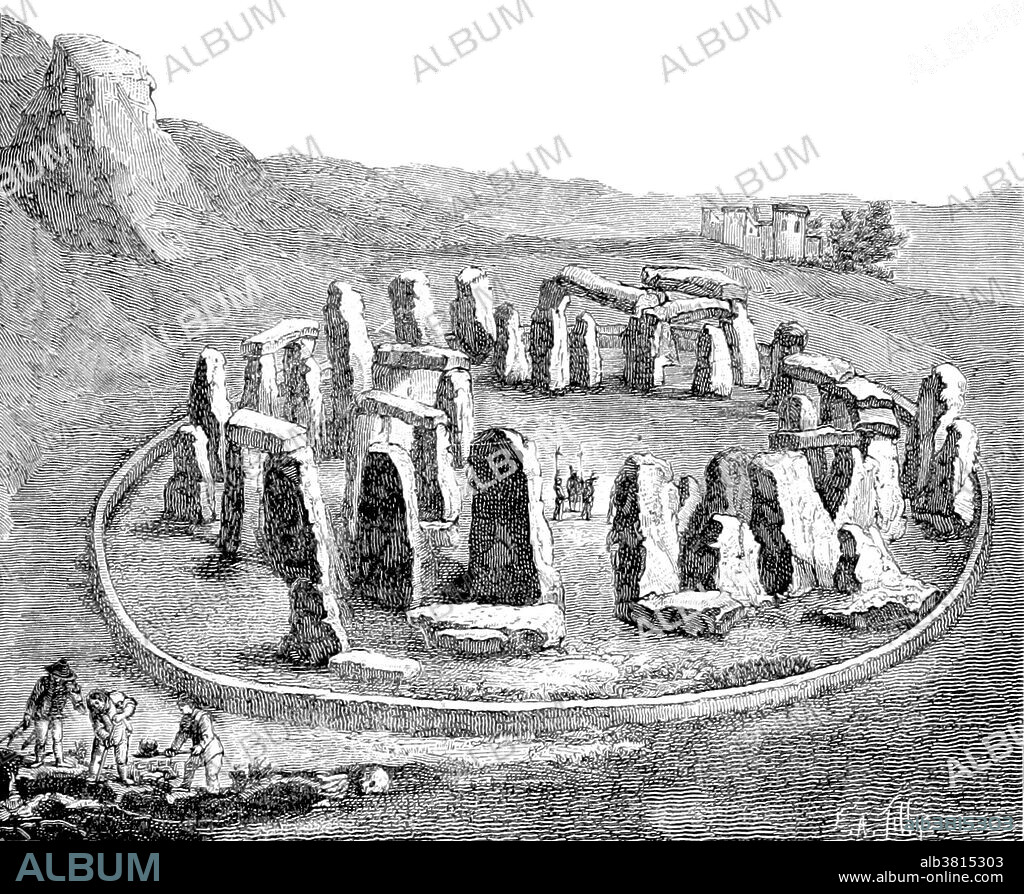alb3815303
Stonehenge, Prehistoric Monument

|
Ajouter à une autre Lightbox |
|
Ajouter à une autre Lightbox |



Avez-vous déjà un compte? S'identifier
Vous n'avez pas de compte ? S'inscrire
Acheter cette image

Titre:
Stonehenge, Prehistoric Monument
Légende:
Voir la traduction automatique
Stonehenge is a prehistoric monument in Wiltshire, England. One of the most famous sites in the world, Stonehenge is the remains of a ring of standing stones set within earthworks. It is in the middle of the most dense complex of Neolithic and Bronze Age monuments in England, including several hundred burial mounds. Archeological evidence indicates that Stonehenge could have been a burial ground from its earliest beginnings. The dating of cremated remains found on the site indicate that deposits contain human bone from as early as 3000 BC, when the ditch and bank were first dug. Such deposits continued at Stonehenge for at least another 500 years. Throughout the 20th century, Stonehenge began to be revived as a place of religious significance, this time by adherents of Neopagan and New Age beliefs, particularly the Neo-druids. The site and its surroundings were added to the UNESCO's list of World Heritage Sites in 1986. Illustration not captioned or dated depicts a sheep herder with his flock in the ruins of Stonehenge. Image taken from page 521 of "La création de l'homme et les premiers âges de l'humanité, Ouvrage illustré, with a preface by C. Flammarion, 1887.
Personnalités:
Crédit:
Album / Science Source / British Library
Autorisations:
Modèle: Non - Propriété: Non
Questions sur les droits?
Questions sur les droits?
Taille de l'image:
3900 x 3203 px | 35.7 MB
Taille d'impression:
33.0 x 27.1 cm | 13.0 x 10.7 in (300 dpi)
Mots clés:
AGE DU BRONZE • ANGLETERRE • ARCHÉLOGIE • ARCHEOLOGIE • ARCHÉOLOLOGIE • ART PREHISTORIQUE • CÉLÈBRE • CELEBRITE • DELABREMENT • ILLUSTRATION • MEGALITHIC • RUINE • RUINES
 Pinterest
Pinterest Twitter
Twitter Facebook
Facebook Copier le lien
Copier le lien Email
Email
